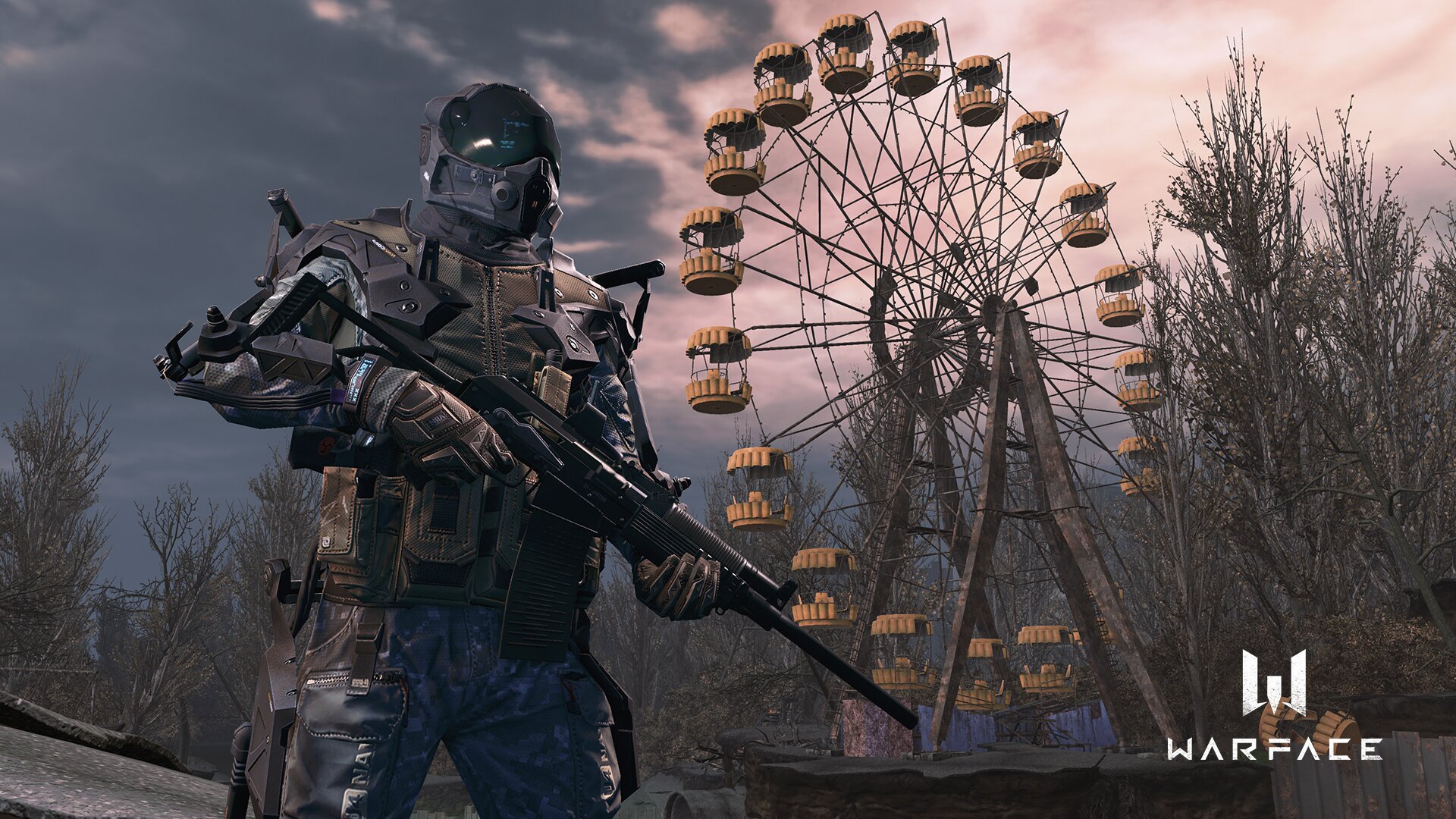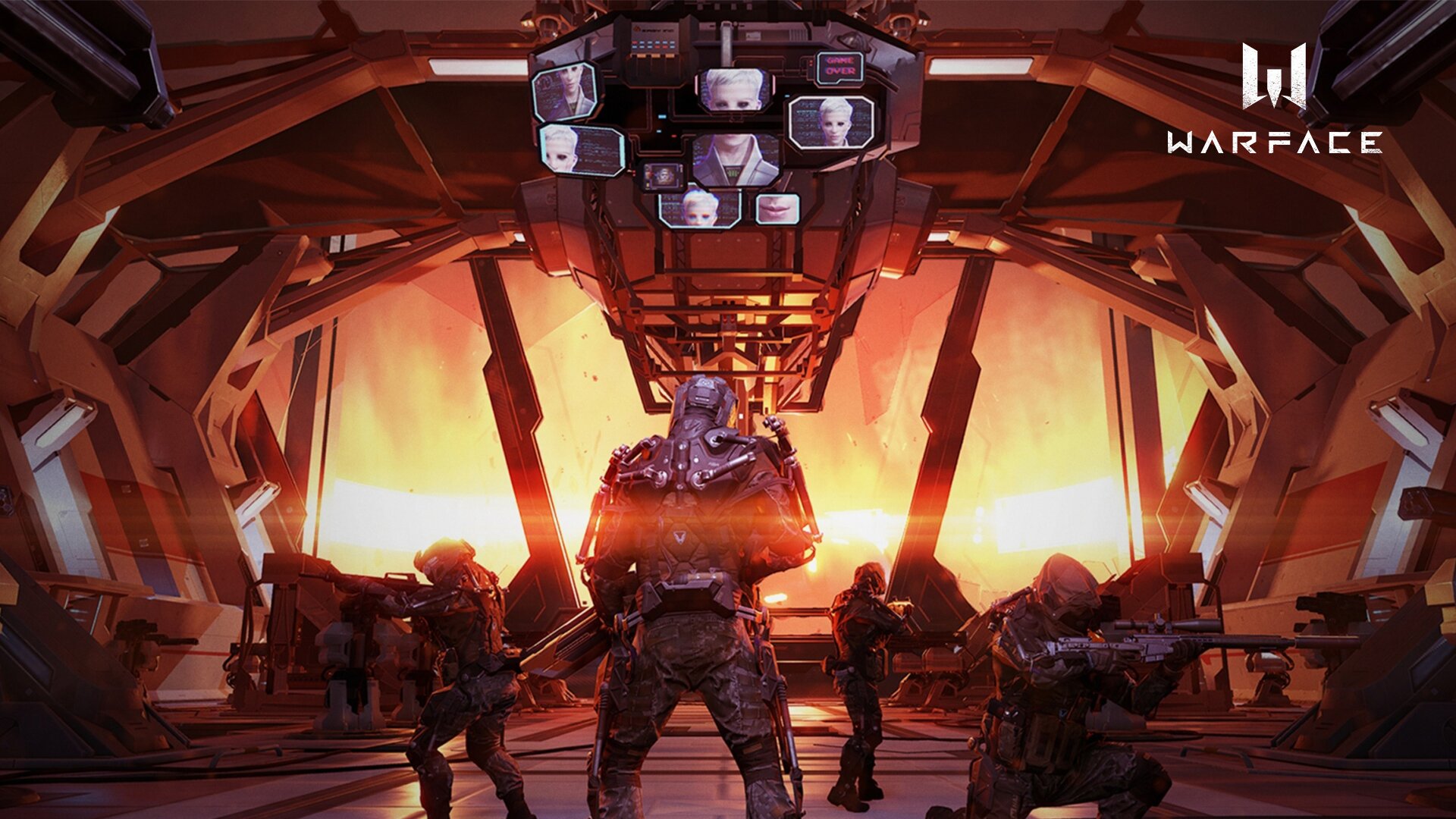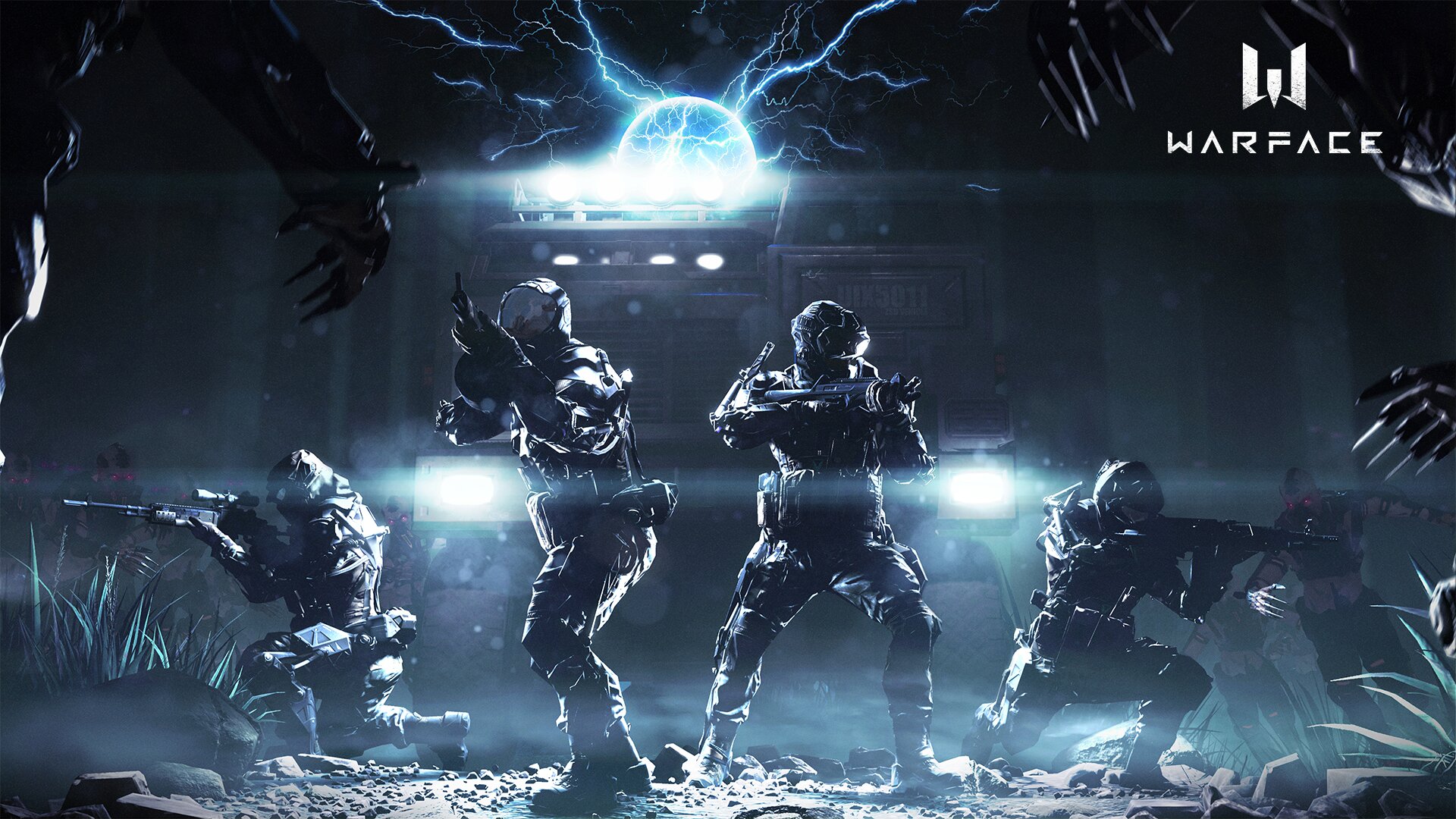No soldier can win a war alone. This is the premise behind Warface, a free-to-play FPS game developed by Crytek, which combines intense combat with gameplay mechanics that foster cooperation between you and your allies. Released worldwide on October 21, 2013, the game will soon live through another birthday and players will receive a special gift from the developers two months later.
During this year’s Gamescom, held on August 22 through 26, Crytek and the
publisher My.com announced additional content for the game, which is set to release in December. The upcoming expansion will mark a new chapter in the conflict that drives the universe of Warface.
According to the developers, the update will feature a new narrative-driven co-op mission held in Pripyat, Ukraine. Located right next to the epicenter of the Chernobyl nuclear catastrophe. It once was a vibrant location, but now it is nothing but ruins. Watch the trailer below:
Crytek’s free-to-play shooter takes place in a world devastated by the greatest
recession in history. Amidst the turmoil, a group of capitalists controls most of the global wealth, and to preserve their interests, they fortified their ivory tower with the might of a paramilitary force known as Blackwood. Players join Warface, an elite squad that fights back against the worldwide dominance of Earth’s resources.
During the story, you will face new enemies, bosses, and enjoy newly refined gameplay mechanics. With new additional content on the horizon, this is an opportunity to reflect on how the game became what it is today and where it will go next.
The Future of Warface:
GameSkinny had the opportunity to hold an exclusive interview with Michael
Khaimzon (above), the creative director of Warface, to have a better understanding of what the upcoming content will bring. Apart from the future, he also discussed the past and the present of the game, ending our conversation with some predictions for what innovations might be in the making for the FPS genre. As for the new mission of Warface, he said:
“This will definitely be one of the biggest updates in our history. The Chernobyl mission is going to be epic. It has been in production for almost a year, so there are lots of new things coming. New environment, new enemies, new boss fight, and a new chapter in the Warface- Blackwood duel. Let’s not forget, though, that, in addition to this mission, the update will also include new weapons, achievements, and many other things.
December, traditionally, is the most important month for us, as many players prepare for holidays; they have a lot of free time. So, we like to release especially enticing content in this time period. This year is not an exception. Having said that, there is also a new experimental mode coming to Warface, more like an event thing, in which we will test something that we actually started over 7 years ago. We really wanted to do this mode, but never got the chance, so now is the time.”
From the answer provided by Michael, we can assume that the new update will significantly change how you experience the game. On August 28, the official Warface account on YouTube uploaded a video showing behind the scenes footage of the new mission, allowing you to take a better look on what the expansion will bring to the table. You can watch it below:
The video gives you a glimpse of what the expansion will deliver and
displays the effort Crytek put into developing the content, even sending developers to study the location personally. While we will only be sure once we can actually play the new mission, it is possible to speculate that ambiance and immersion will be two of its strongest attributes, as a consequence of their extensive research.
We can claim this due to the fidelity of the levels, which are almost identical to the real locations they are based on, albeit with some minor changes. But that covers the future of Warface, for now. During our interview, Michael continued to discuss Crytek’s free-to-play shooter.
Warface Today:
One of the main challenges for any game is staying relevant through the years. Some titles pass the test of time with excellence, such as World of Warcraft, while other productions are not as fortunate and their player base shrinks over time, as seen with Evolve. Michael commented on how Crytek works to retain its community in the long run:
“I think the key is listening to the community, understanding them, and releasing regular updates. We did 70+ updates so far – that is literally an update every single month. Thus, our players see that the game is truly live. It is changing, evolving, and they can influence that evolution. All of us, the developers, have to play the game, really play it every day, face the issues, and deal with them first hand.”
Apart from creating ways to keep an audience, the free-to-play model brings
another challenge. The game is always under development, meaning that the stream of new ideas must be constant.
Designers must always craft new features, maps and fine-tune the ones that already exist. Having new ideas is an appealing process for a developer and, once they are approved, the team must bring them to life. This brings us to our next topic.
Designing a Game That is Constantly Growing:
Throughout the life of a competitive FPS title, developers often continue to expand the game by releasing new maps. To give an optimal experience to players, these levels are usually asymmetrical, meaning that both sides of the battlefield are different. The objective is to provide the player with a sense of novelty when crossing from one side to another, but this also raises a concern.
It is necessary to ensure both parts of the map have the same tactical opportunities; otherwise, a team will have an advantage, thus breaking the balance of the game. Creating two different sides, while making sure they are fair to both teams is an enormous challenge, and Michael provides us with some information on how this process works:
“It’s definitely a know-how that took us years to develop. We have a very detailed level design “bible,” that teaches certain rules relevant to all levels. There are tons of things to consider – timing, positions, slides, coop climbs, and best places for each class. This is really a topic that deserves its own article.”
Level design; however, is only one of the parts that create the experience of the player. A developer must pay close attention to the dynamics of the game modes the title offers.
In a game such as Warface, which contains a plethora of modes for PvE and PvP, a question begs for an answer: How do the creators split their attention across distinct types of gameplay while ensuring they are all fun? Michael discussed the matter:
“Well, some are more fun than others, but it’s a natural process – you have to try different things, some will work, some will not and it depends on the player’s own preferences. It’s OK, no one can predict with 100% certainty what will happen. We make assumptions based on what our players like and then go ahead and try these ideas. One thing we are definitely proud of is our Blitz mode.
We tried to take the typical Plant the Bomb mode to a different level – make it more casual and fast paced, while still quite tactical. It worked out really well. We can definitely say that Warface players prefer very dynamic type of game-play where you engage an enemy just a few seconds after the spawn or when the round doesn’t take longer than a couple of minutes – and that’s what we always strive to achieve.”
As Warface changes with each new update, by delivering new maps, modes, and missions, the game continues to make its path towards the future. With the largest mission in its history set to release in December, it is time to look back and recall how it all started. On this subject, Michael offered some insights on the initial moments in the development of Warface.
Where Everything Started:
The video above shows the first trailer of Warface and it displays how much the game has changed over the years. Prior to its release, Crytek had already developed other successful titles, such as Crysis and Far Cry, which scored 91 and 89 on Metacritic respectively. After the success of these productions, then came the moment for the studio to plan their next move.
The next step for them involved beginning development on a free to play competitive FPS game. For a company that had thrived developing paid AAA experiences, the shift in the payment model may seem like an audacious move. But, according to Michael, the decision came naturally. On this matter he stated:
“We already had a team in Frankfurt dedicated to AAA titles such as Ryse and the Crysis series, so we wanted to try a different approach – take a smaller team, and launch a title as fast as possible in a completely different way. It was also obvious to us that we were in a unique position. There was, and still is, not much competition on the F2P market for a high quality PvE COOP shooter. We knew that we had unique experience and a tool-set to get this out before others.”
Once the decision to develop a free to play FPS game became official, it was time to start planning the title. According to Jason Schreier in his book Blood, Sweat and Pixels, during the pre-production phase of a project, the developers must make decisions that will determine the future of their game; and that’s just what Crytek did.
Through these preliminary stages, it is paramount to set priorities. Considering that Crytek had created successful FPS games in the past, the developers needed to decide whether they would transfer gameplay elements from Crysis (above) and Far Cry to Warface. According to Michael, the right choice was clear:
“Not much was carried over. When working on a typical box title, your main objective is to sell the game to the players. You do not have to worry about the churn rate or the playtime. In F2P there is no second chance. If you do something wrong – you lose the player forever, as he can simply delete the game. At the same time, it is easier to get people in, because there is no pay wall. In a nutshell, there is little to carry over, unless you are releasing a sequel with a different payment model.
As far as the other areas go, there is also a big difference. For example, in Crysis our objective was to make the most beautiful game, no matter the time and effort. In Warface, the focus is on performance, comfortable navigation, and map balance, as it’s – first and foremost – a multiplayer title, as opposed to FarCry and Crysis, which were about cinematic single player experience first.”
Considering Crytek’s approach of creating a brand-new design for Warface, the development team worked under the pressure of crafting innovative ideas that would resonate with the audience. The first step to developing a new game is delineating the goals of the project, and Michael spoke briefly on the subject of Warface’s objectives at the start:
“Our priority was to deliver the first AAA F2P COOP title with a balanced,
cybersports ready PvP mode, and over time we managed to deliver pretty much exactly what we wanted.”
According to Michael, Crytek is happy with the product Warface has become.
Reaching the milestone of 48 million users — according to the publisher My.com — proves that the game has developed a strong audience.
However, the FPS genre is a competitive market and studios must fight to stay at the top. This scenario entices competition between companies, as developers constantly innovate to get an edge over their rivals, and players benefit from this as more new and interesting games pop up.
The Future of FPS Games:
Gamers enjoy spending time with innovative technologies, and one of the biggest developments of the video game industry in recent years is the push to create experiences in Virtual Reality (VR). While this hardware still needs to be refined, many players worldwide are already enjoying it, as evidenced by the 915,000 users who purchased the Sony PlayStation VR as of February 19. However, if you think this is the future of gaming, think again, because Michael believes that another innovation may be in store:
“One thing that will probably happen sometime soon is eye control. We will no longer need the mouse to move the cursor around and it will definitely affect the speed and precision of gameplay. As for VR, it is a very specific platform; it’s great for certain games, but not as much for fast-paced shooters. It is definitely cool, and Crytek has released some amazing games for VR, but in order for it to become mainstream, there needs to be significant hardware improvements.
No one wants to move around with heavy goggles on the head, trying to not be stuck in cables. May be once the glasses are wireless and as light as regular sunglasses, the VR will take off. But again, chances are it’s not going to replace PC for fast paced shooters.”
According to Michael, VR is still a long way from being the future of FPS video games. This is okay because while players do wish to see developers experimenting with new tech, studios can still create innovative and enjoyable experiences with today’s hardware.
But game makers are constantly conceiving new concepts to deliver unique productions and this drive towards innovation goes beyond creating new technology. One of the departments in which developers are investing heavily is narrative design.
Story in a Free to Play Competitive FPS Games?
On October 31, 2013, the YouTube channel Extra Credits released a video (above) discussing whether it is possible to implement a narrative in a competitive multiplayer game. Storytelling in gaming continues to become more mature and complex, and as this process unfolds, developers continue to bolster their skills to create more compelling narratives.
An example of this trend is Ken Levine’s presentation during 2014’s Game Developers Conference, when he pitched a concept for a story that can only be told through video games. With this scenario, some questions emerge: can game makers successfully implement a story in every genre? Can a free to play FPS game provide players with a meaningful narrative? Michael shared his thoughts on the subject:
“In F2P, the main issue is, probably, the resources – cut scenes and realistic acting is very hard to do, and it’s always a matter of priority. You ask yourself: what is the best way to utilize our time and effort? In F2P games, players want primarily action, so this has always been our focus.
Another thing to remember is that Warface is a coop game, there are five players who are not at the same place, looking in different directions, and doing different things, so it’s much harder to play a cut-scene that everyone will see. We definitely want to improve storytelling in Warface and are looking for the most efficient ways to do it without interrupting the gameplay.”
This statement from Michael may shed some light on the future of Warface, as
developers at Crytek try to discover new storytelling techniques that suit their game. Considering that their goal is to have a narrative that does not interrupt gameplay, it is possible that they decide to invest more in environmental storytelling. Whether this prediction will be accurate remains to be seen.
Conclusion/Summary:
Our conversation with Michael provided us with a glimpse into the future of Warface. The narrative-driven mission coming in December will significantly change how players experience the game, according to the developer. Based on the behind the scenes footage, it seems that ambiance and immersion will be two strong attributes of the expansion.
Another noteworthy point of our talk was Michael’s perspective over the future of FPS games. Unlike what some people may think, the Creative Director of Warface does not believe VR will be the future of the genre. He reckons this role will fall on the shoulders of eye-tracking technology.
Concerning the future of Warface, he claimed that his team is studying how to create stronger narratives in the game. However, due to the characteristics of a free to play title, the team would prefer to avoid relying on cutscenes to convey their story. This may lead them towards the use of environmental storytelling to strengthen the narrative of Warface.
To stay updated on how the game will continue to evolve and to play the upcoming Pripyat mission in December, grab your rifle and enlist today on Warface.
![]()














Published: Sep 21, 2017 09:08 am